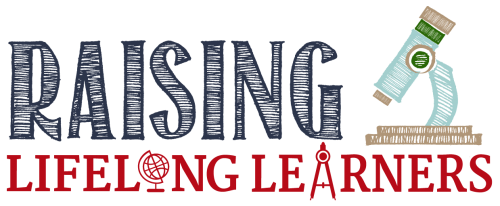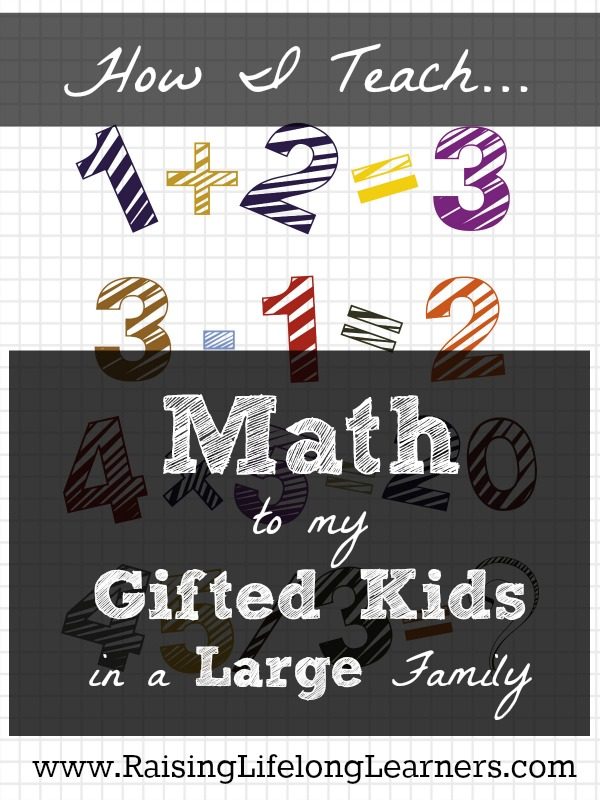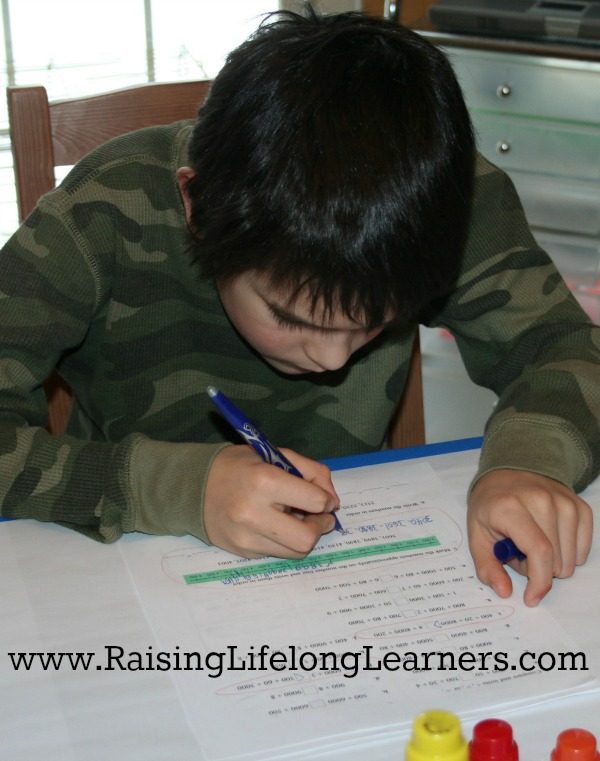How I Teach Math to Gifted Kids
It’s a week-long How I Teach series this week. I’m so glad you stopped by. If you’re new, consider subscribing so you don’t miss a post, and head back to the beginning to see what you’ve missed.
Today I’m talking about how I teach gifted kids math in a large family setting. And, I’m going to admit right off the bat that math is NOT my favorite subject. In fact, the irony of writing this post on the same day I just sat down to talk to my husband about what isn’t working in our homeschool {math} is not lost on me.
So, because I’m struggling a bit, and am planning changes, I’m going to share some of what has worked for us and what we’re going back to in the coming weeks. I’ll make sure to update you all on how it’s going once we’re back on track.
This post contains affiliate links. Thank you for your support.
The lesson, though, is this – don’t marry yourself to a specific program, method, or curriculum. Be flexible and willing to try new things. Gifted kids have special needs. Their different learning styles and preferences may not be the same as yours, but should be respected and, if possible, accommodated.
Math Goals for Our Large Family
I want to make sure the kids see a reason for the math they learn, but I want them to have a rigorous program. When we first started homeschooling Trevor, we finished up his year with the math program he’d been using at his public school and supplemented with Singapore Math.
We played games and talked about the math we came across in our everyday life.
To keep math relevant, I talk to the kids about our financial goals, spending, saving, and how we budget for groceries. When they ask for things like a popsicle from the ice cream truck, I give them the money it would cost, and have them compare it to buying a whole box of popsicles from the store.
But we still do formal math because I feel that they need to have the discipline to work their way through a program. We’ve spent the past few years trying some different programs and now have a pretty good idea of what is the best fit for our family.
Math Curriculums and Programs We’ve Used
As I mentioned, we started by supplementing Trevor’s math with Singapore, which I loved. I really liked the rigor, the presentation, and the lack of onerous repetition. One of the most difficult things about teaching gifted kids – whether at home or in a school setting – is that they don’t need the repetition that most kids do, and so too much practice of a skill they’ve mastered can turn them off of learning altogether. And a kid like Trevor will let you know when he’s not enjoying what he’s doing.
Despite the love I had for Singapore Math, I switched it up the next year because I found a great deal on Math Mammoth, which is based off the Singapore method, but is presented in printable eBook format. I figured that, in the long run, it would be a great fit for us because I’d still get the method of teaching and learning I liked, but have the license to print books for each of my kids, saving money from year to year.
Unfortunately it backfired on me.
Math Mammoth, while a nice program, is really busy. By that, I mean there are a lot of problems crammed onto each page and it was totally overwhelming to Trevor – to the point he just shut down altogether. He’d look at the page, decide he’d never be able to complete the problems on it, and even if he knew the answer to every problem, he’d just stare at the paper for hours.
I resorted to cutting up the workbook pages and sending him on math scavenger hunts, having him do small chunks of problems a little at a time throughout the day, and other little tricks, just to get through this single subject. It was exhausting and took up way too much of my time.
So we switched again.
This time, I bought Teaching Textbooks for him so he could have the novelty of working independently on the computer, and I could have a break. And, while it worked out for the novelty and in giving me more time to devote to the other kids, it was a miss as far as a good fit for us.
Trevor received a score of 97% or above on every lesson, quiz, and test in the grade level. Yet, when I gave him a paper and pencil pretest to decide on the next level for him, he showed several gaps. The kid who has always been a grade-level or two above his age in mathematics is struggling to do some things he should have learned two years ago.
So, since Molly is just embarking on her math journey, and the littles aren’t quite there yet, I’m pulling everyone back to Singapore Math. We’ll work through the {appropriate leveled} textbooks together in the morning, and they’ll either do a practice sheet or the lesson in their workbook independently. Because they love it, I’ll also read through Life of Fred with all of them. I think Fred is a fabulous supplement, but I think they still need some formal math instruction to go along with it.
Making Math Fun
When I taught gifted kids in the public school, I was blessed to be able to tailor their programs to their interests. I took my gifted math kids out of class one day each week to teach them a math lesson. The other four days, they stayed in their classrooms, but worked through a curriculum that their teachers and I had modified for them.
The lessons in my resource room were all game-based.
We’re implementing the same model in our homeschool.
Every day we’ll play at least one math, critical thinking, or strategy game. And, everyday there will be a challenge problem written on the board in the kitchen for the kids to puzzle out. I’m introducing the kids to the game of NIM this week, and we’ve already begun playing the game of 24 and Stack, two games I played with my gifted students. I also love the books Family Math by Jean Kerr Stenmark, Virginia Thompson, Ruth Cossey and Marilyn Hill and Loving Living Math by Cindy West.
For my little ones, I like to give to give them lots of opportunities to play with numbers. We count, use manipulatives to make patterns, and play games. I try to give them toys and games that will be fun, but give them number, color, and shape practice too.
As I said in the beginning of this post, math is my weakest area. I like to think we’re on the right track, but I’m always looking for new ideas to make learning hands-on, fun, relevant, and meaningful. If you have any great ideas, share them in the comments so we can all benefit.




